Equipment
How to pick the right putter

In the game of golf, putting is the great equalizer. It doesn’t take speed or strength and simply requires you to select a line and hit a ball at the right speed—easier said than done. But regardless of your skill level, it is the one club in your set you really never have to upgrade once you find the right one, which is why knowing how to pick the right putter is so important.
This is the GolfWRX guide to selecting the right putter for you.
How to pick the right putter: The right look
This one seems simple, but you have to like the look of your putter and feel comfortable lining it up. For some golfers, that means finding a more traditional heel and toe weighted blade with a basic metal finish, for others that could also mean a larger mallet style that inspires confidence thanks to its larger footprint and contrasting colors.
Between the two aforementioned styles, there are still varying hosel/neck (where the shaft meet the head) configurations that can change how a putter wants to naturally rest when being held which can, in turn, change the natural toe hang of the putter and how it will fit.
How to pick the right putter: Understanding putter toe hang types
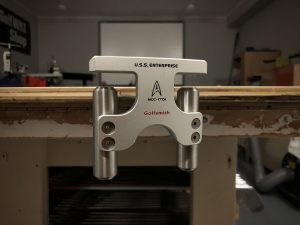
- Face Balanced – Depending on the hosel configuration, this style can be found on both mallet and blade-style putters, and when being balanced by the shaft, the face will sit perpendicular to 12 o’clock. These are intended to fit golfers with a straight back-straight through stroke/minimal face rotation.
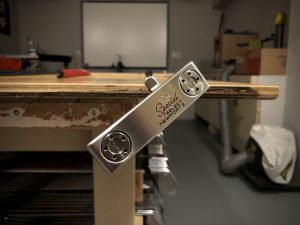
- 1/2 Toe Hang – This is the most neutral type of toe hang and sits between the face balanced and full toe down. It is found on most heel-toe blade putters with full-shaft offset (Scotty Cameron Newport 2 shown) and is for slightly arcing strokes with medium face rotation.
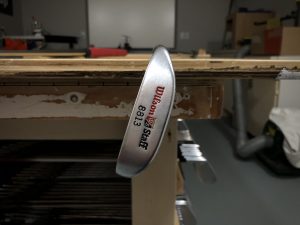
- Toe Down/Full Toe Hang – This type is only going to be found on the most heel-shafted blade-style putters, and when being balanced by the shaft, the toe will face “6 0’clock”—directly down to the ground. These are intended to fit golfers with the most extremely arcing stroke and high level of face rotation.
NOTE: There are multiple variations of 1/2 toe hang that sit both closer to full toe down and face-balanced all designed to fit various stroked depending on the amount of arc and face rotation.
Whatever reason you have for picking the putter you ultimately use, make sure you like the looks of it because you’re going to be seeing a lot of each other.
How to pick the right putter: Understanding your stroke style
Your putting stroke will inevitably play a big role in the putter you select because certain styles are going to work better for certain golfers depending on their putting stroke style, which is referenced above. To make it easy to understand—putting strokes can be put into three categories, and for visual reference, check out the handy guide below with pictures supplied by our friends at Ping.
Slight Arc
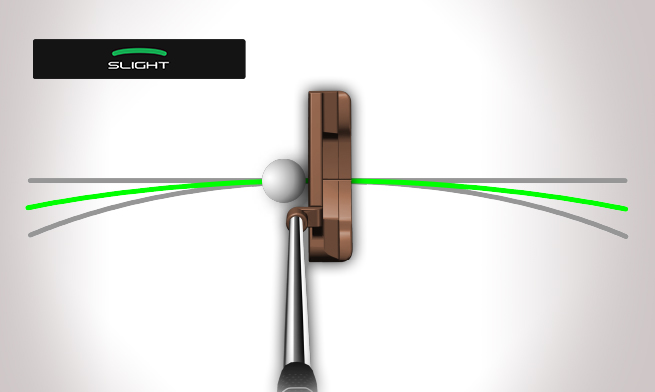
This is where most golfers fit in since it is the most natural stroke to make. A slight arc is also what I like to call a neutral stroke, meaning that when it comes to picking a putter it gives the golfers the most options for finding one that is going to fit best.
Straight back and straight through
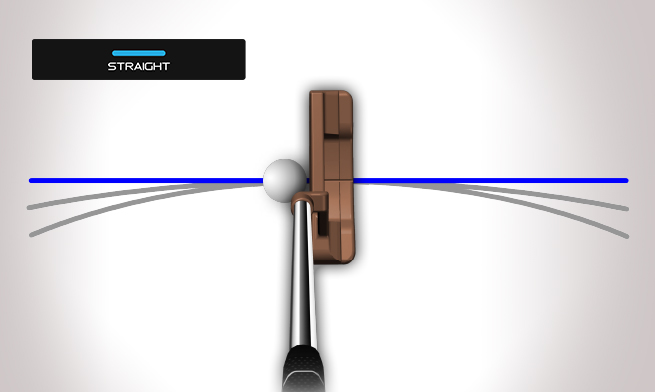
A straight back and straight through stroke can help a lot of golfers eliminate variables, and when paired with the right putter can really help those that struggle to get putts started on line. Golfers in this category usually perform best with a face-balanced putter.
Strong Arc
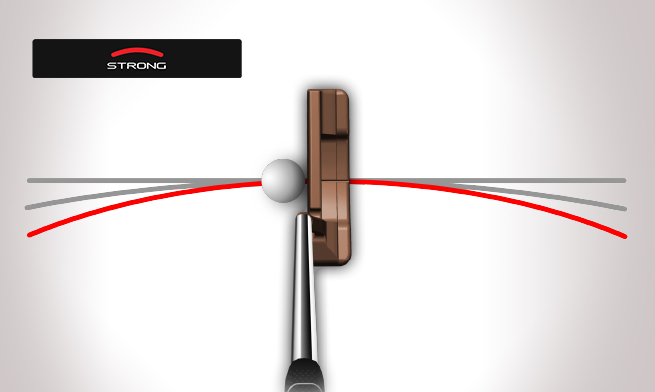
A strongly arced stroke is the exact opposite of straight back-straight through and requires the most amount of practice and technique to maintain consistency. Players with a strong arc generally also use a lot more wrist in their stroke and because of the inconsistency, this stroke creates, there are fewer putters on the market that fit this type.
Putting it all together
Once you have selected your putter, the last step is getting it dialed into your final spec for length, lie, and loft. For length, the goal is to be able to stand in a comfortable putting position with your eyes over the ball or, just inside of your eye line.
For lie and loft, it is best to see a fitter, since it requires specialized tools to properly adjust, but if you are trying to get an idea for the direction your putter will need to be bent use the reference guide below.
- Lie Angle too flat
- Correct Lie Angle
- Lie Angle too upright
To see how a professional putting fitting is conducted, check out the video below from TXG
- LIKE129
- LEGIT28
- WOW5
- LOL1
- IDHT3
- FLOP5
- OB1
- SHANK21
Whats in the Bag
Max Homa WITB 2024 (April)
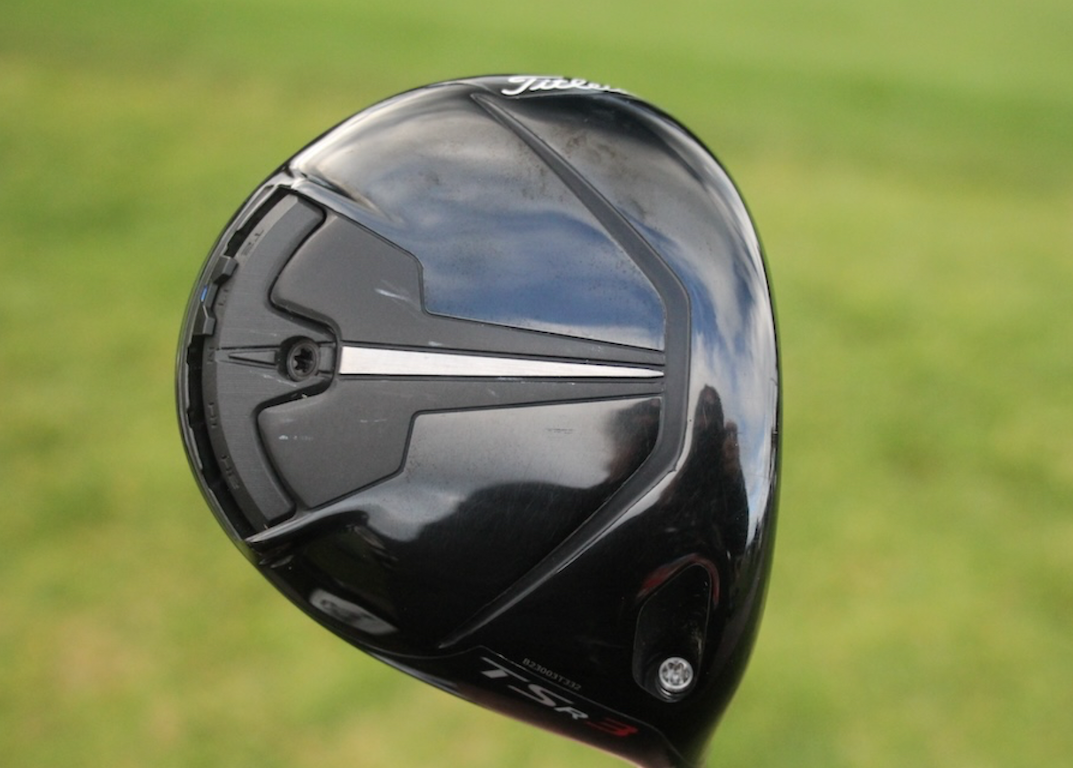
- Max Homa what’s in the bag accurate as of the Masters.
Driver: Titleist TSR3 (9 degrees, D1 SureFit setting)
Shaft: Fujikura Ventus TR Black 6 X
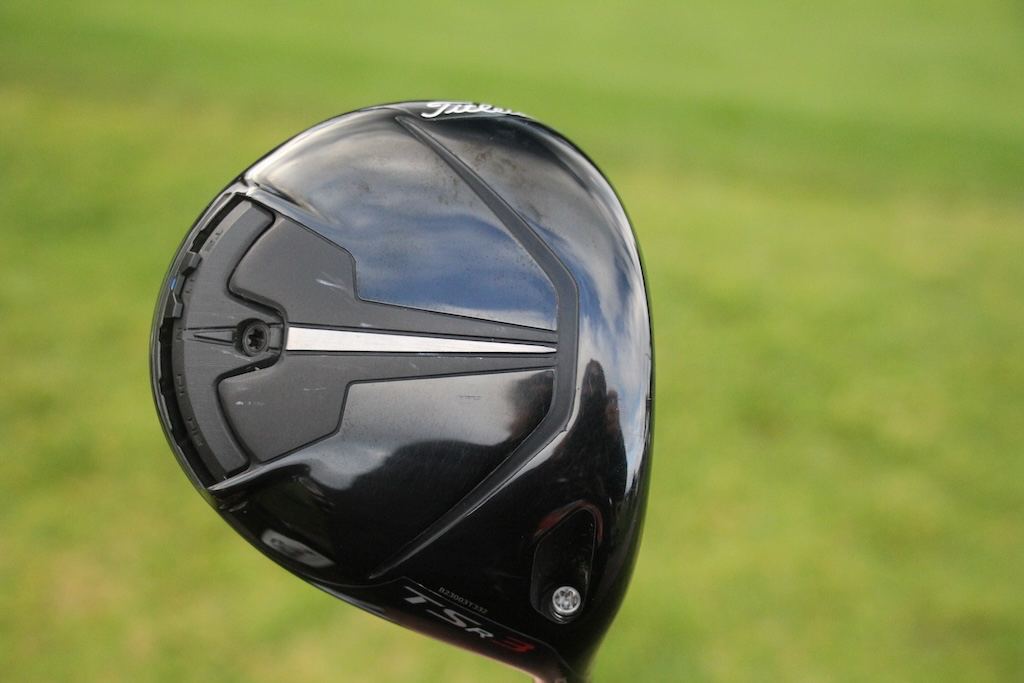
3-wood: Titleist TSR2+ (14.5 degrees, A1 SureFit setting)
Shaft: Mitsubishi Tensei 1K Red 80 TX
5-wood: Titleist TSR2 (21 degrees @19.25, D1 SureFit setting)
Shaft: Fujikura Ventus Blue 9 TX
Irons: Titleist T100S (4), Titleist T100 (5), Titleist 620 (6-9)
Shafts: KBS $ Taper 130 (4-9)
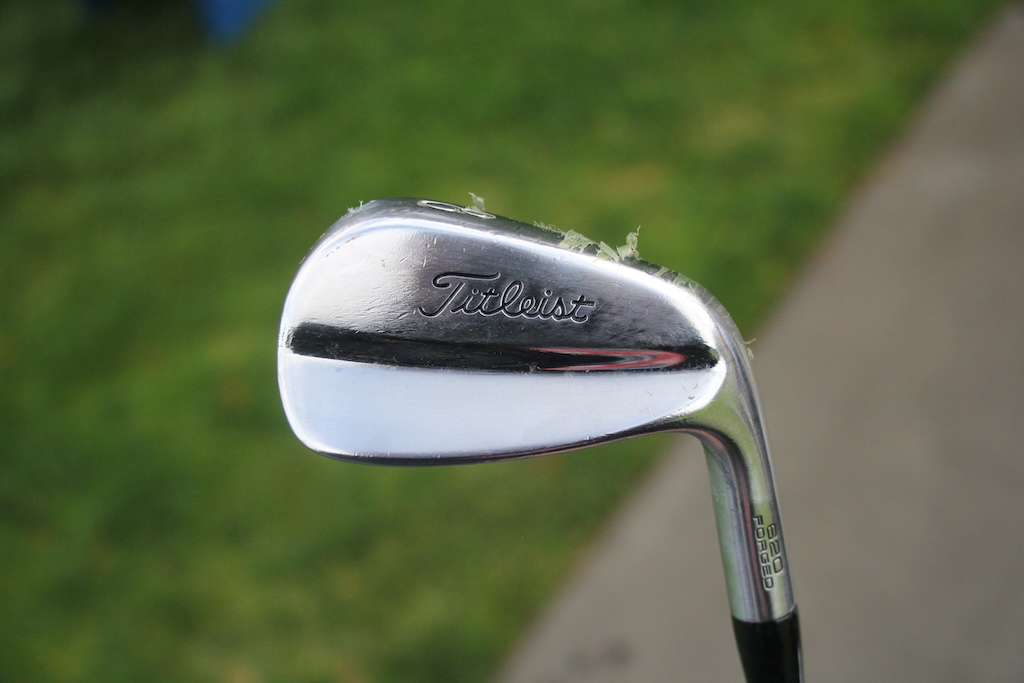
Wedges: Titleist Vokey Design SM10 (46-10F, 50-12F, 56-14F), WedgeWorks (60)
Shafts: KBS $ Taper 130 (46) KBS Hi-Rev 2.0 135 X (50, 56), KBS Hi-Rev 2.0 125 X (60)
Putter: Scotty Cameron T-5.5 Proto
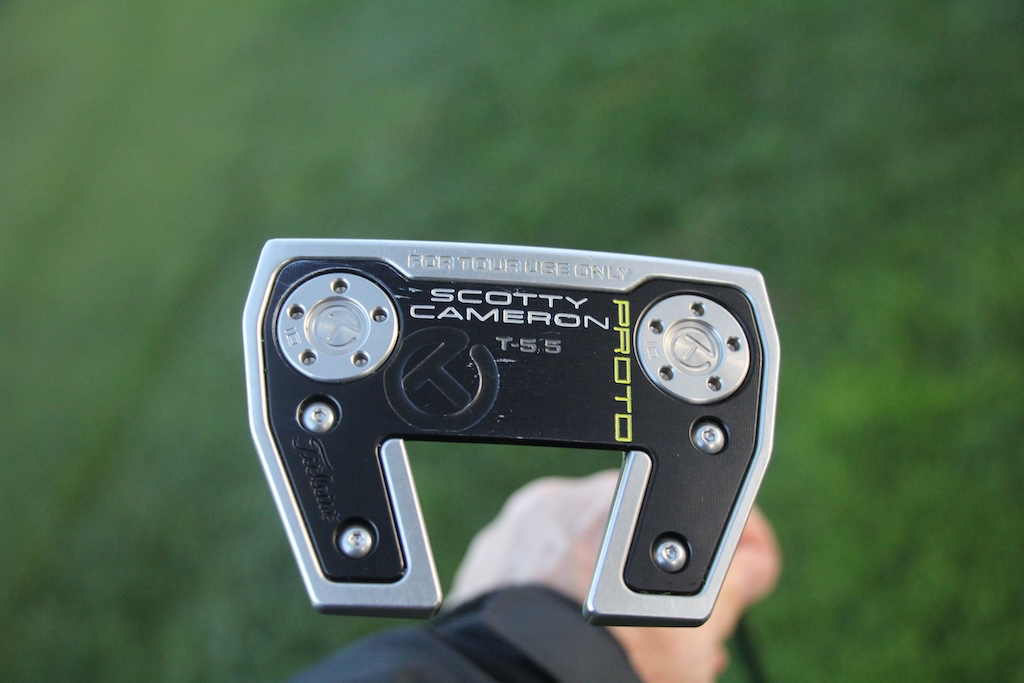
Grips: Golf Pride Tour Velvet Cord
Ball: Titleist Pro V1
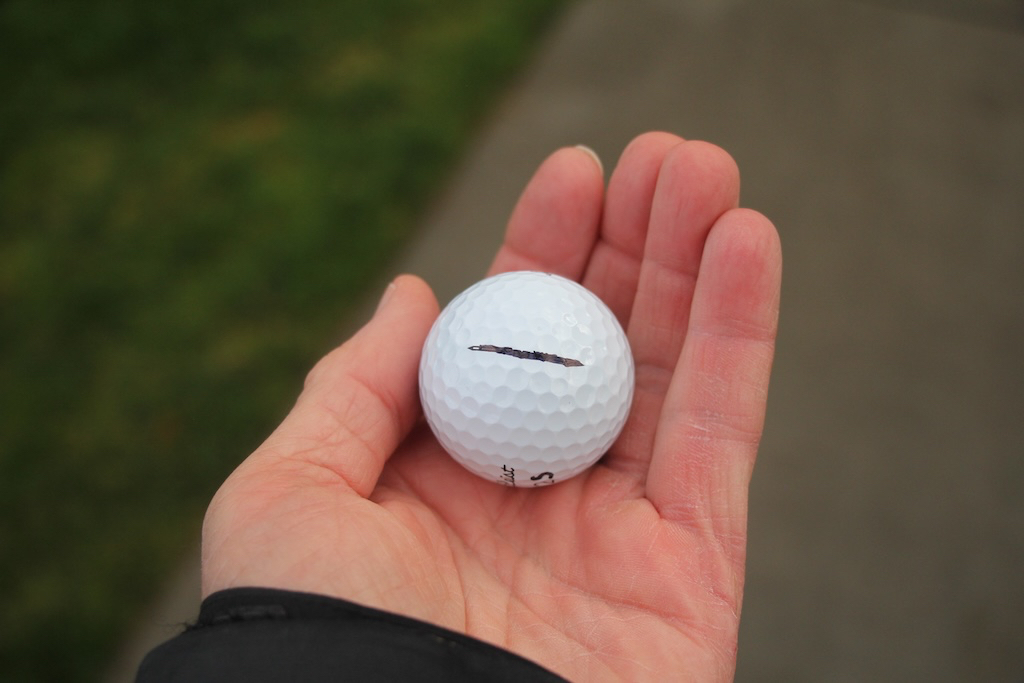

More photos of Max Homa’s WITB in the forums.
- LIKE7
- LEGIT0
- WOW0
- LOL0
- IDHT0
- FLOP0
- OB0
- SHANK1
Whats in the Bag
Bryson DeChambeau WITB 2024 (April)
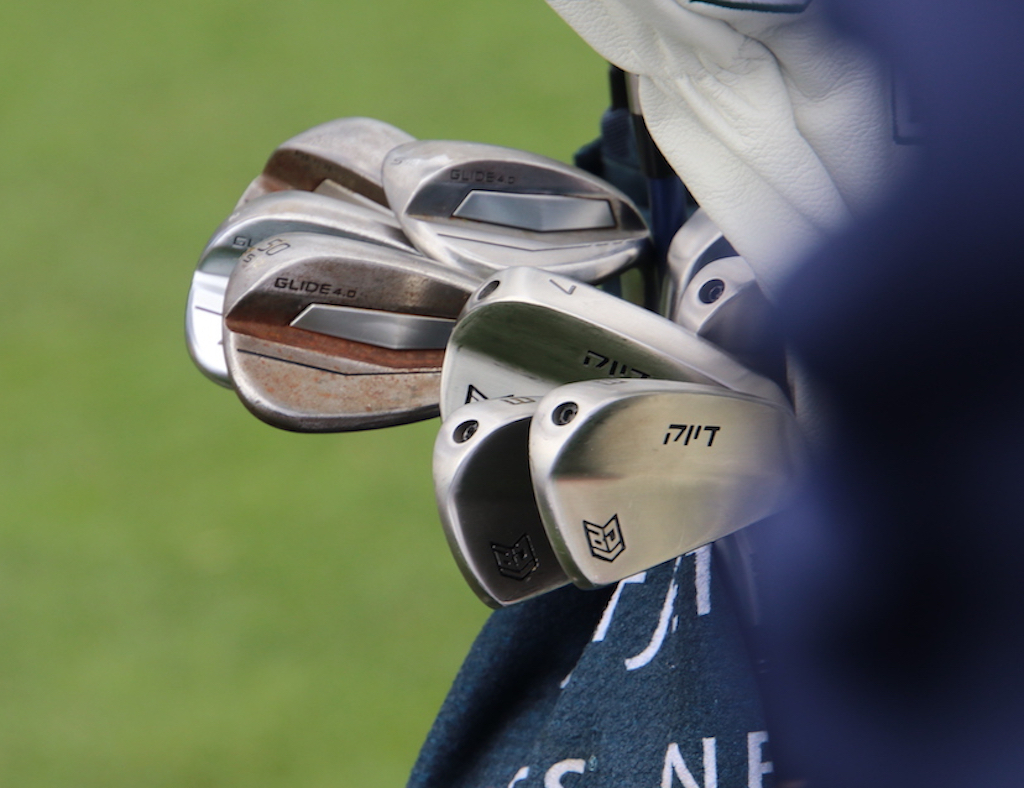
Driver: Krank Formula Fire Pro (6 degrees)
Shaft: Project X HZRDUS T1100 75g 6.5
Mini driver: TaylorMade BRNR Mini Driver (11.5 degrees @10)
Shaft: Project X HZRDUS T1100 75g 6.5
- Unconfirmed. We are working to gather details.
5-wood: Krank Formula Fire
- Unconfirmed. We are working to gather details.
Irons: Avoda Prototype (5-PW)
Shafts: LA Golf Prototype
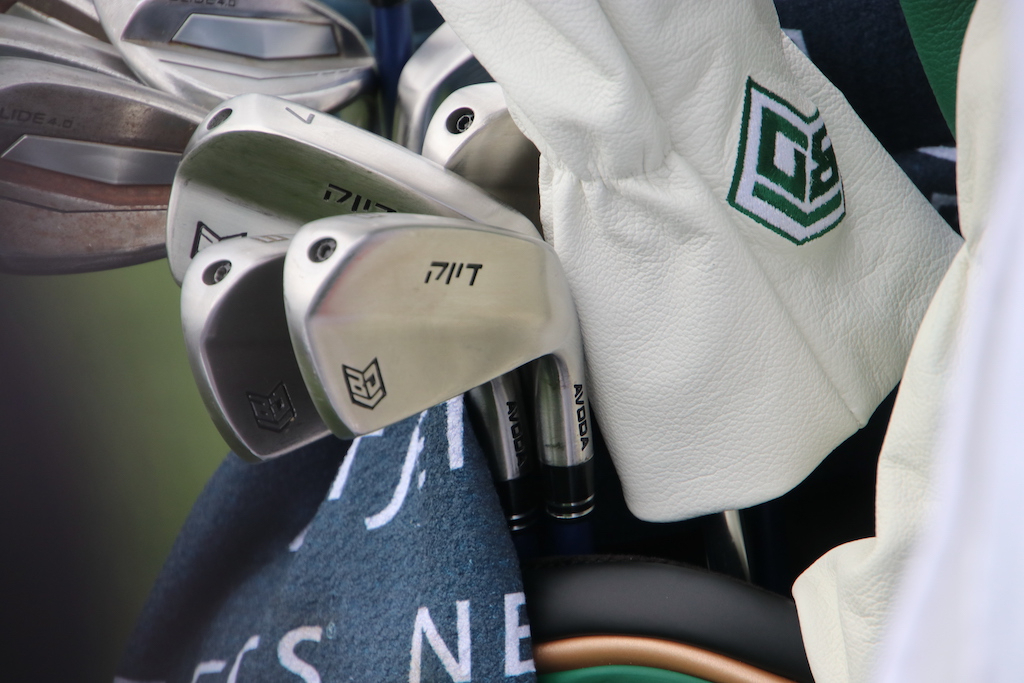
Wedges: Ping Glide 4.0 (46-12S @45, 50-12S, 56, 60)
Shafts: LA Golf Prototype
Putter: SIK Pro C-Series Armlock/LA Golf Proto
Shaft: LA Golf C2L-180
Grip: JumboMax JumboFlat 17
Grips: JumboMax UltraLight XL
Ball: Titleist Pro V1x Left Dash
- LIKE8
- LEGIT2
- WOW2
- LOL0
- IDHT0
- FLOP0
- OB0
- SHANK0
Equipment
Accra launches new GX wood and hybrid shafts

Accra Golf shafts have long been synonymous with fitting, and the new GX line of driver, fairway, and hybrid shafts continues that legacy.
Since 2004, Accra has been making high-end performance golf shafts that use the latest in materials and design philosophy. Their group of around 350 fitters are some of the best and most highly ranked in the world. While you might see other brands on professional tours more often, there are plenty of touring pros using Accra products and winning.
Accra’s new GX line of shafts is designed to offer a consistent and accurate shaft to a wide range of players. The GX line consists of 3 different shafts in driver, fairway, and hybrid designs.
The Accra GX shafts are designed for fitters to dial in golfers to the perfect shaft for their swing. Accra included a ton of technology into the GX line including their S3 profiling, DyMatch, and Constant Flex technology. DyMatch has been Accra’s quest to ensure that all shafts in a family feel and perform similar from driver to hybrid or iron shaft. Typically shafts get stiffer as they go up in weight, but Accra’s Constant Flex keeps the flex of the shafts consistent so fitters and golfers can dial in the weight that the golfer need without have to work around a stiffer or softer flex. Accra worked with Cool Clubs to build out its S3 Shaft Profiling system that not only allows a quick and easy EI profile of any shaft, it helps with quality control to ensure shafts come out of production exactly as they were designed.
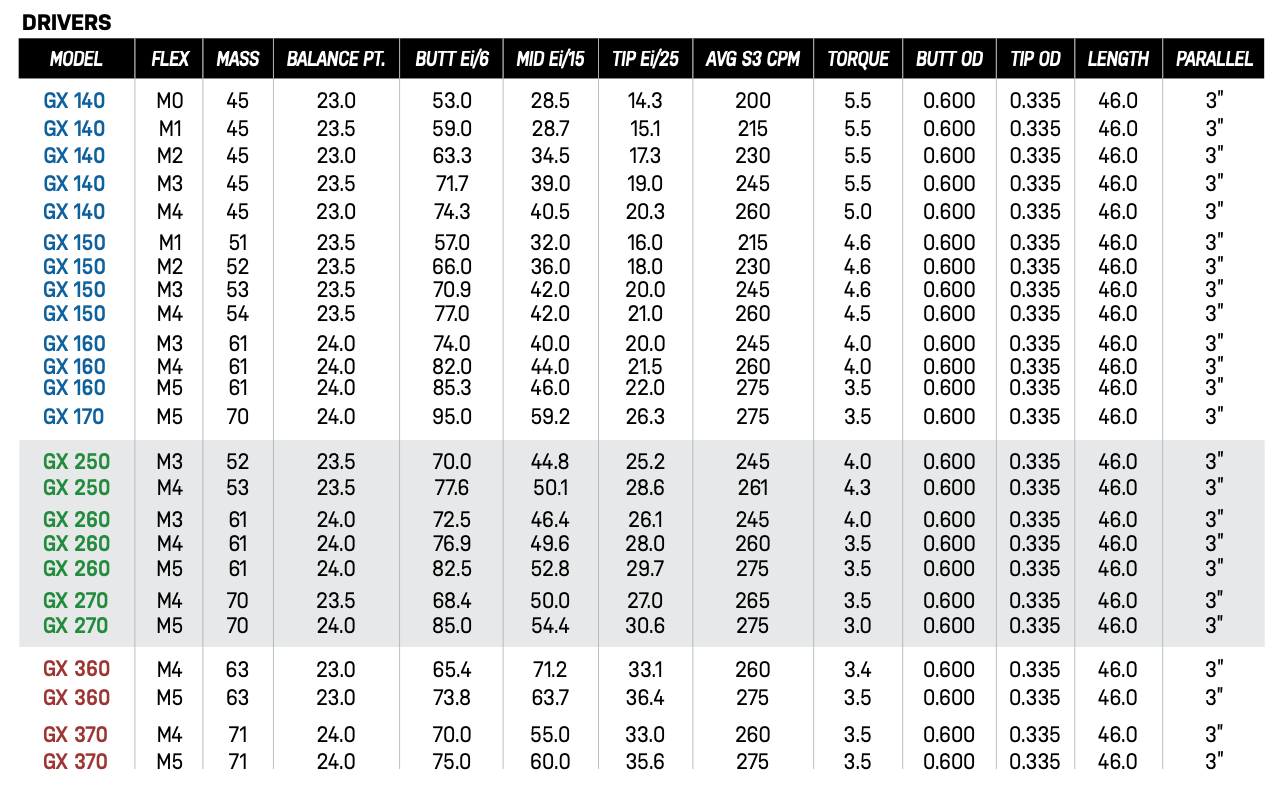
Accra GX Red 300 Series

GX Red is lowest launching and spinning option in the GX line. Driver shafts have fewer options with just the 360 and 370 models that come in at 63 and 71 grams. The GX Red is made for faster swinging, or stronger, players who require a stiff (M4) or x-stiff (M5) shaft for their swing. Fairway and hybrid models are also on the higher weight side with the fairway clocking in at 80g and 90g for the hybrid. Accra designed this series with one of the stiffest tip sections of any Accra shaft in the current line, and while it is built to control launch and spin, the Red 300 Series will still offer that smooth feel.
Accra GX Green 100 Series

If your swing usually works best with mid-launch and spin, then the GX Green 200 series might be the right shaft for you. Offered in more weight and flex options, you can get a GX Green in 52 grams and all the way up to 70 grams in regular, stiff, and x-stiff flexes. GX Green will give the player a smooth feel and transition from the handle down to the tip section while still providing great stability and consistency. Accra also focused on the energy transfer of this shaft, and golfers can see some increased ball speed compared to other shafts.
Accra GX Blue 200 Series

While the GX Blue 100 Series is the highest launching and spinning option in the GX lineup, it will still give golfers the control and consistency they need. Starting off at 40g, the GX Blue series puts an emphasis on lighter weight to allow players to swing the club faster, promoting more distance. Accra touts the stability of the GX 140 Blue driver shaft by stating that some long driver competitors have put it in play to try and gain every MPH they can. Matching fairway and hybrid shafts are both on the lighter side at around 60g for the fairway and 65g for the hybrid depending on the flex.
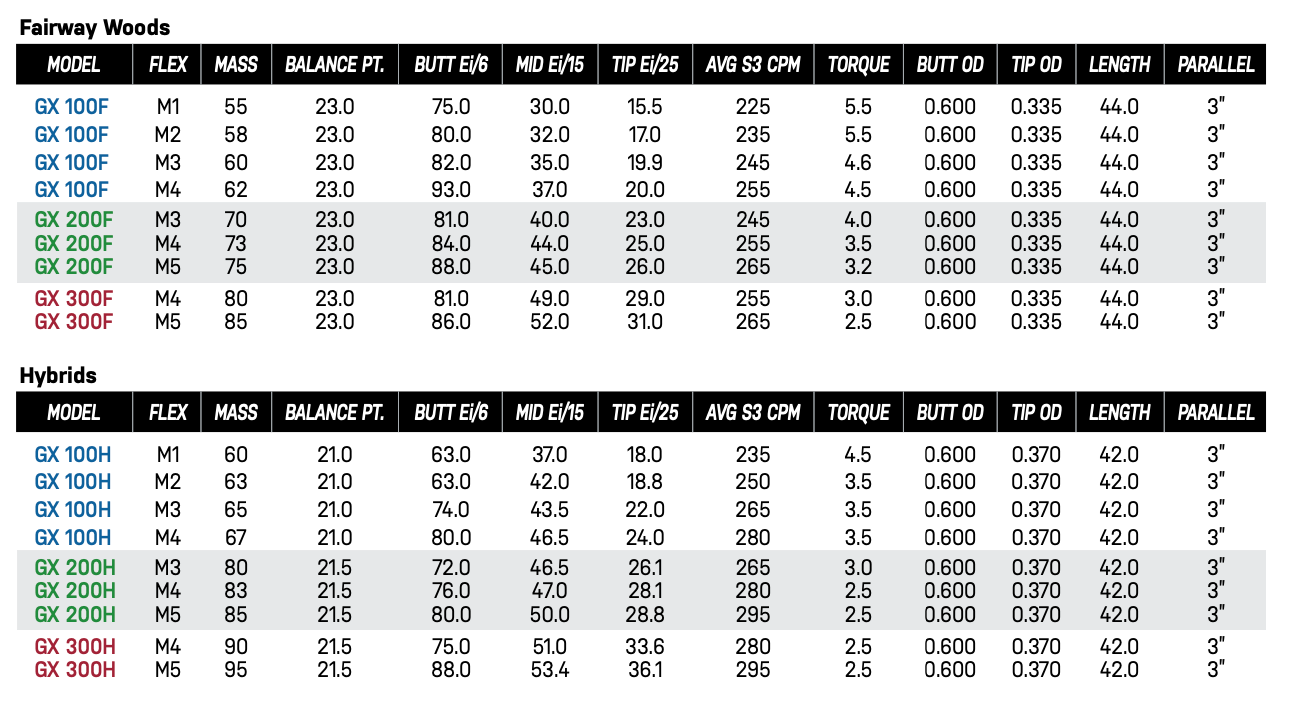
- LIKE1
- LEGIT0
- WOW0
- LOL0
- IDHT0
- FLOP1
- OB0
- SHANK0
-

 19th Hole6 days ago
19th Hole6 days agoDave Portnoy places monstrous outright bet for the 2024 Masters
-

 19th Hole2 weeks ago
19th Hole2 weeks agoThings got heated at the Houston Open between Tony Finau and Alejandro Tosti. Here’s why
-

 19th Hole7 days ago
19th Hole7 days agoTiger Woods arrives at 2024 Masters equipped with a putter that may surprise you
-

 19th Hole2 weeks ago
19th Hole2 weeks agoReport: Tiger Woods has ‘eliminated sex’ in preparation for the 2024 Masters
-

 19th Hole1 day ago
19th Hole1 day agoTwo star names reportedly blanked Jon Rahm all week at the Masters
-

 19th Hole2 weeks ago
19th Hole2 weeks agoAddiction, spinal fusion, and scam artists – Everything Anthony Kim revealed in candid interview with David Feherty
-

 19th Hole2 weeks ago
19th Hole2 weeks agoAnthony Kim says doctors told him that he ‘may not have much time left’ ahead of LIV return
-
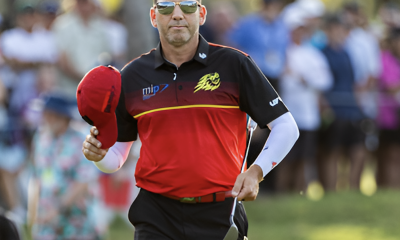
 19th Hole1 week ago
19th Hole1 week agoBrooks Koepka and Sergio Garcia make significant equipment changes as 2024 Masters looms

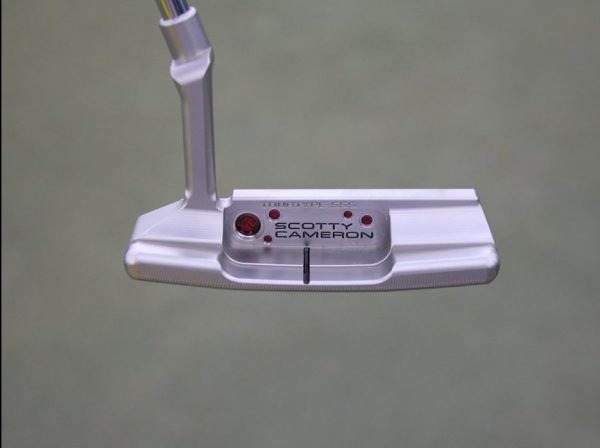
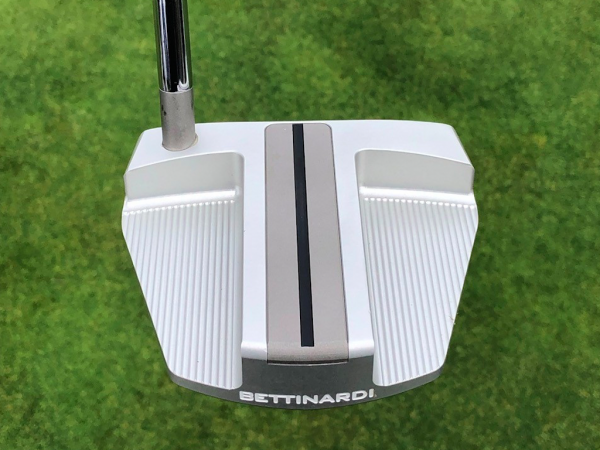
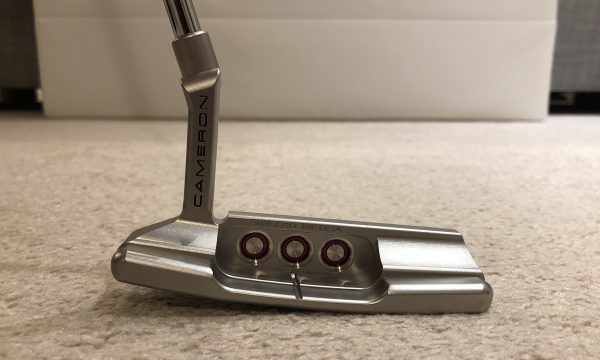
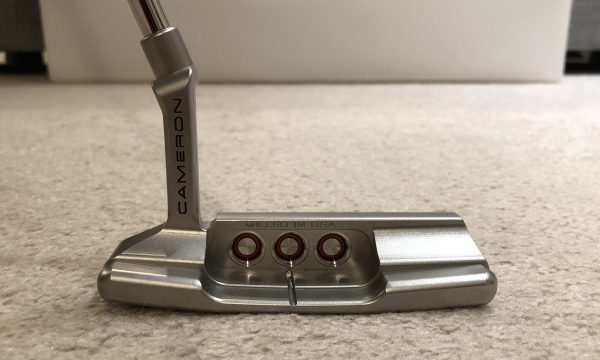
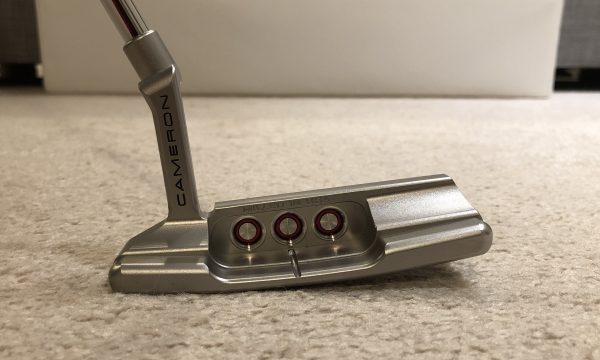

















Pingback: 8 Best Blade Putters For 2022 | Fairway Approach
xm
Jul 27, 2022 at 6:24 am
This post is truly a good one it helps new the
web users, who are wishing in favor of blogging.
Pingback: 9 Best Blade Putters of 2021: Full Review | Fairway Approach
Karsten's Ghost
Oct 26, 2020 at 6:40 am
My goodness… two big misses.
#1 – Shaft stiffness. It has to feel right, and the stiffer, the better. There’s a reason some guys put TT X7’s in their putters.
#2 – Grip! There are a lot of good putters out there, but no matter which one you pick, if it moves in your hand in an unexpected way, you miss. Try putter grips. Know what you want. Head shape and weight are important, but you don’t hold onto that. Have you seen now many different grips are on tour, even though most still use an Anser clone head?
Steve Peake
Oct 25, 2020 at 8:16 pm
Thanks for the insightful article. I am curious about any thoughts on two different types of putter. One would be the toe up style like Axis1, Callaway’s experiment and particularly in L.A.B Golf putters. They offer a lie angle balance, hence, the name. I have putted with both of their models many times. They are different than any other putter I’ve ever used. This putter stays true to the arc like nothing else. Is anyone familiar with their putters?and why don’t more tour pros use them? Many thanks